Nazi Germany’s Last Super Heavy Tank: The Panzerkampfwagen E-100

Nearing the end of WWII, Germany maintained the belief that super tanks could reverse the war’s outcome and help them emerge victorious. The Panzerkampwagen E-100 was one of the super tank designs.
It had the ability to be used as a heavy artillery system platform, a heavy tank destroyer, and even an anti-aircraft vehicle.
The two tanks development had the goal to standardize the components. Adlerwerke Company from Frankfurt Auf Main submitted a blueprint in March 1944 for their super-heavy tank that they called the E-100.
This came after the initial proposal of the tank in April of the previous year.
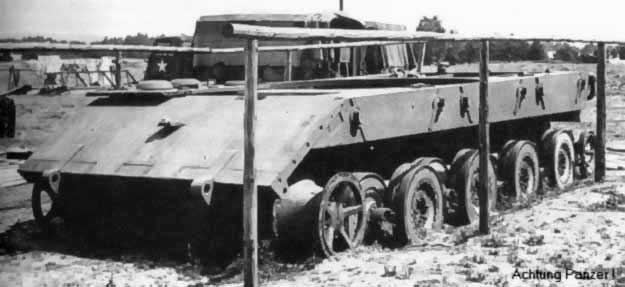
E-100 chassis
The blueprints indicated that the tank would have a 75-mm gun and a 149-mm gun. They proposed two different engines for the tank, one being a 700-hp Maybach HL230 with a Tiger II turning mechanism.It had a top speed estimated to be 23 kmh. The other option was a 1200-hp Maybach with an estimated top speed of 40kmh.
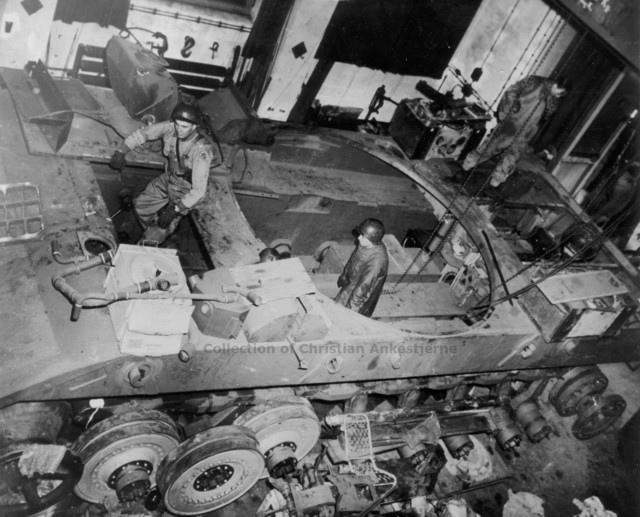
 Hitler
ordered super heavy tank development to come to an end in July 1944, so
work on the E-100 was placed on low priority with only three Adler
employees being made available to build the prototype.
Hitler
ordered super heavy tank development to come to an end in July 1944, so
work on the E-100 was placed on low priority with only three Adler
employees being made available to build the prototype.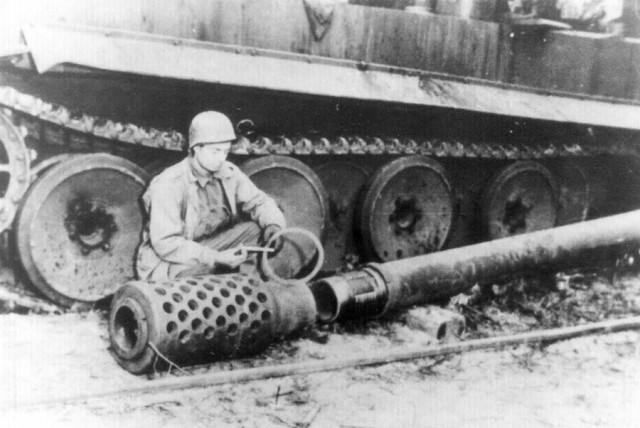
Prototype Pictures
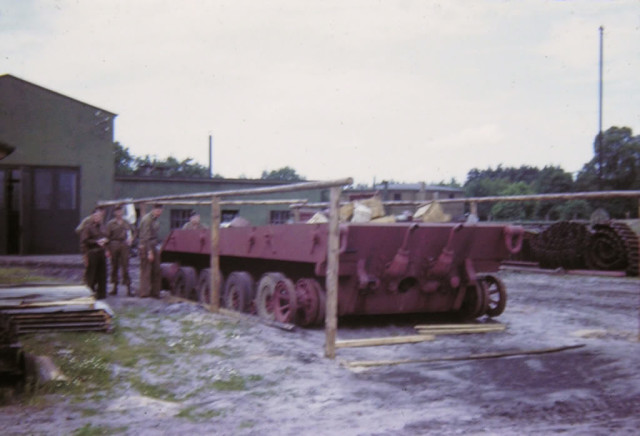 Color picture of the prototype, note the size of the thing
Color picture of the prototype, note the size of the thing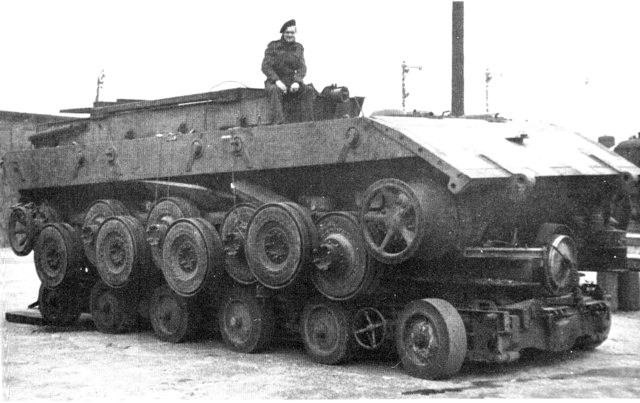 The prototype in 1945, shown here on a trailer.
The prototype in 1945, shown here on a trailer.
The E-100 prototype ready to be transported to the UK
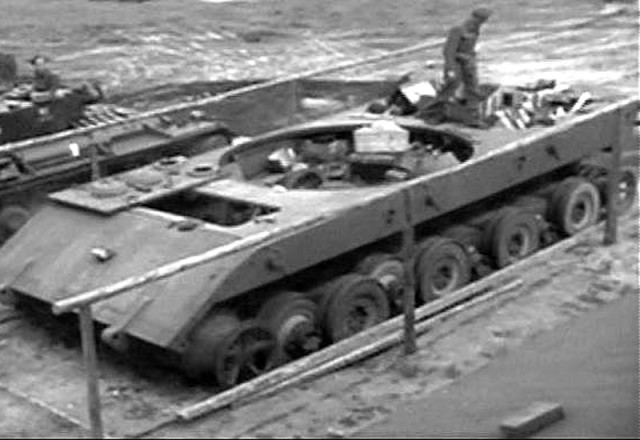 Another picture of the partially completed chassis
Another picture of the partially completed chassis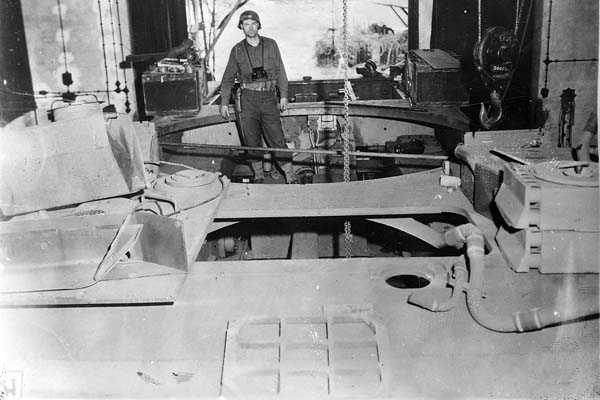
In 1942, Krupp suggested the creation of a 150-ton vehicle as a competition model to the Panzerkampfwagen Maus, designed by Porsche. First drawings of the vehicle now designated Tiger-Maus were made by the end of 1942. Further development was stopped in 1944.
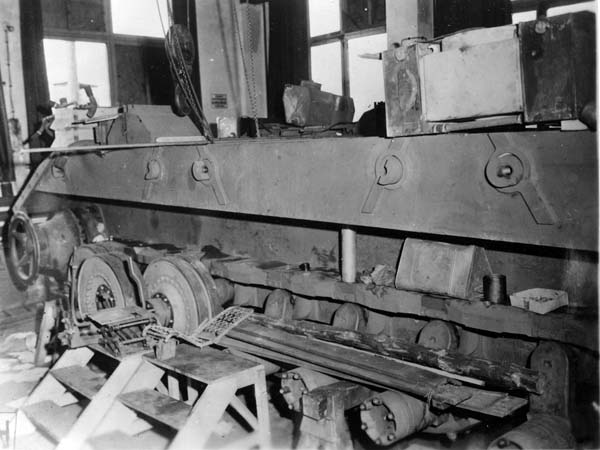
The development of the design now designated E 100 was continued by Adler in Frankfurt beginning in March 1944.
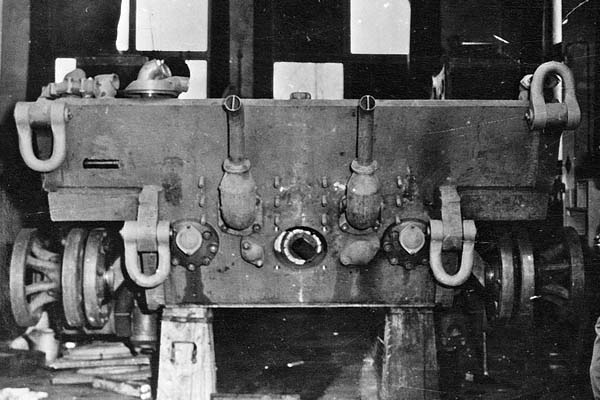
The project could not be finished before the end of the war. The incompleted prototype illustrated in all three photos was captured by US forces in Haustenbeck in 1945.
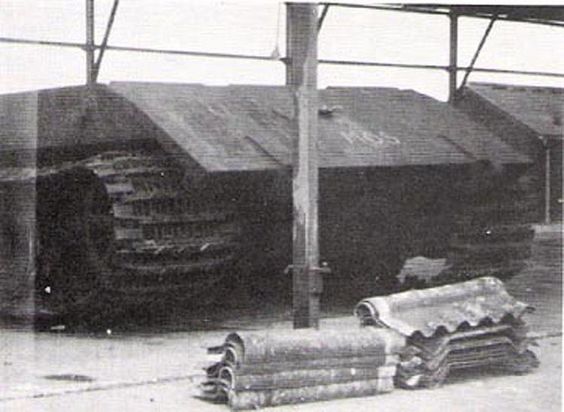
This is also described as an E-100 prototype picture, however, it is the only one with tracks we’ve seen so we are not sure.
Primjedbe
Objavi komentar